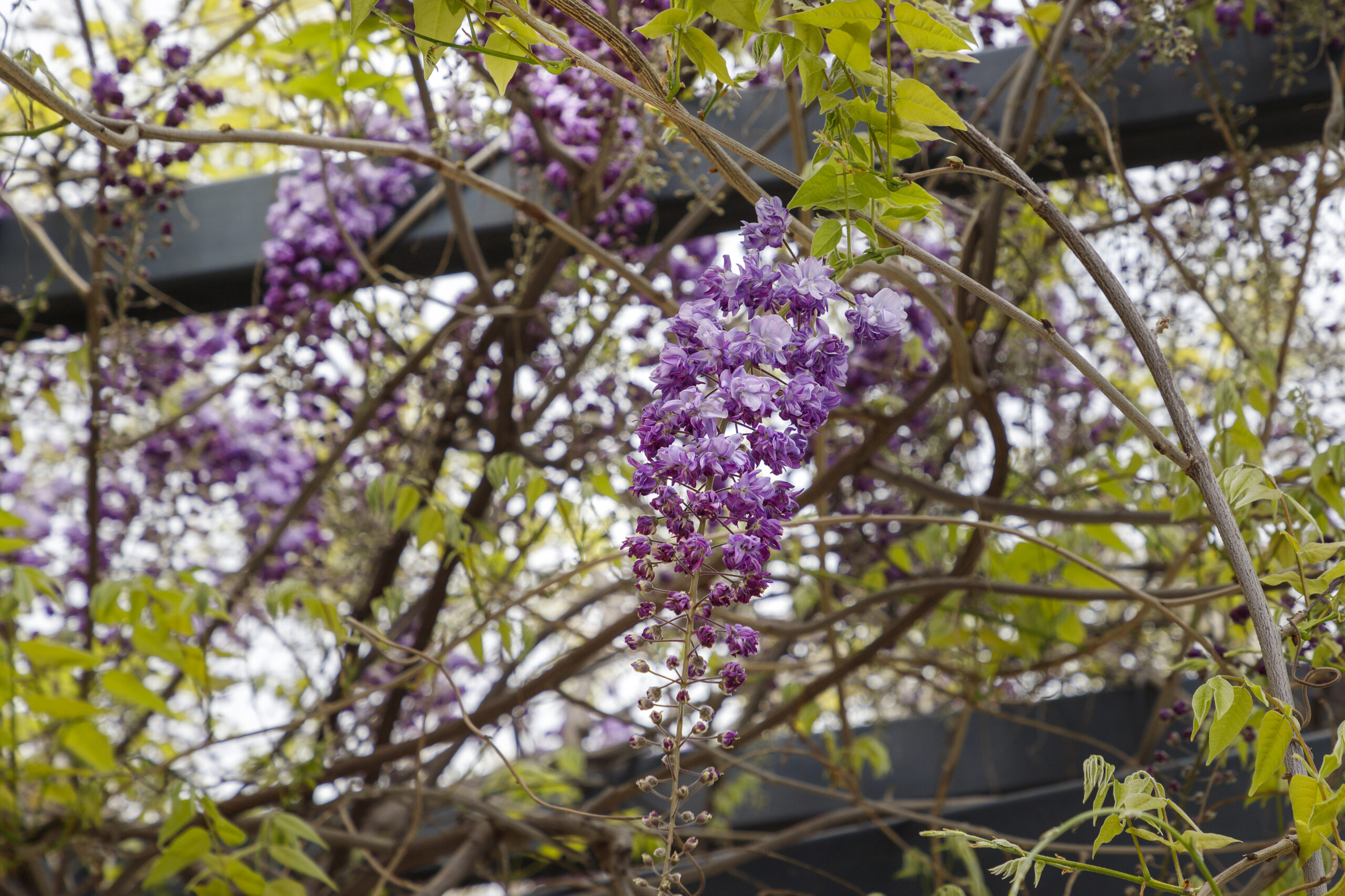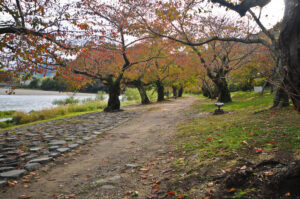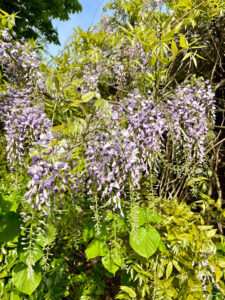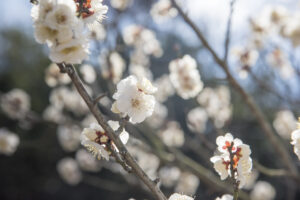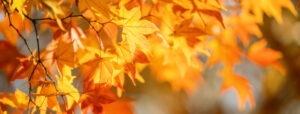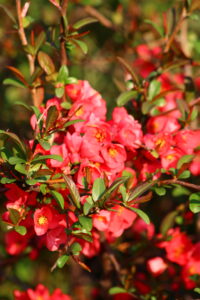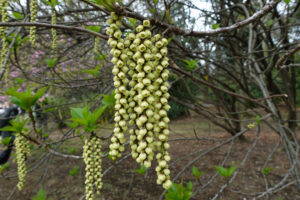Japan is a country steeped in natural beauty, and one of its most enchanting seasonal spectacles is the blooming of wisteria. Known for its cascading clusters of flowers that embody grace and elegance, wisteria captivates locals and tourists alike as it transforms gardens and parks into ethereal landscapes. This article delves into the allure of Japan’s wisteria blooms, exploring their cultural significance, prime viewing locations, and the best times to experience their beauty. We will also touch on the top festivals that celebrate these blossoms, tips for photography, local cuisine, and sustainable tourism practices in wisteria gardens.
The Cultural Significance of Wisteria Blooms in Japan
Wisteria flowers hold a deep cultural significance in Japan, symbolizing love, longevity, and good fortune. They have been admired for centuries and are often featured in traditional poetry, art, and folklore, where they are associated with beauty and the transient nature of life—an idea deeply rooted in Japanese aesthetics. The fleeting beauty of wisteria blooms reflects the impermanence celebrated in the philosophy of "mono no aware," the awareness of the beauty in transient things.
In addition, wisteria plays a role in Japanese festivals and rituals. The blossoms are often used in decorations, and their presence signifies the arrival of spring and the rejuvenation of life. In Shinto beliefs, wisteria is considered a sacred flower, often planted near shrines to invite blessings and good fortune. As such, these blooms are not merely a seasonal delight; they are intertwined with the cultural fabric of the nation.
The changing of seasons is a significant aspect of Japanese culture, and wisteria blooms mark the transition from the cold of winter to the warmth of spring. This seasonal change is celebrated through various cultural events, where locals and visitors come together to appreciate the beauty of nature. The sight of wisteria vines draping elegantly over trellises and fences is both a visual and emotional experience, invoking a sense of peace and reflection.
Furthermore, wisteria is often associated with aristocracy and elegance, as only the privileged could cultivate such beautiful plants in ancient Japan. This association has endured over the decades, making wisteria a symbol of both beauty and status. To this day, many Japanese families take pride in their wisteria gardens, passing down the tradition of nurturing these exquisite plants through generations.
The various shades of wisteria, ranging from deep purples to soft whites, also carry different meanings. Purple symbolizes nostalgia and mourning, while white represents purity and innocence. This rich tapestry of meaning enhances the emotional depth of wisteria blooms, making them an integral part of Japan’s seasonal celebrations.
In conclusion, wisteria blooms are more than just fleeting flowers in Japan; they embody a diverse range of cultural sentiments, from love and beauty to transience and spirituality. Their significance enriches the experience of witnessing them, making it a profound journey into the heart of Japanese culture.
Best Locations to Witness Japan’s Wisteria Spectacle
Japan boasts several iconic locations renowned for their stunning wisteria displays, each offering a unique experience for visitors. One of the most famous is the Ashikaga Flower Park in Tochigi Prefecture, known for its sprawling wisteria trellises, which bloom in a breathtaking array of colors. Visitors can stroll through tunnels of hanging wisteria, creating a surreal atmosphere that feels like walking through a dream.
Another must-visit location is the Kameido Tenjin Shrine in Tokyo, where elegant wisteria trees have been cultivated for centuries. The shrine hosts a beautiful wisteria garden that attracts thousands of visitors during its blooming season. The sight of the blossoms against the backdrop of the shrine’s traditional architecture creates a striking contrast that is perfect for photography.
The Kawachi Wisteria Garden in Fukuoka Prefecture features two magnificent wisteria tunnels, allowing visitors to walk through a cascading curtain of flowers. The garden’s unique layout and diverse varieties of wisteria make it an ideal spot for those looking to immerse themselves in nature’s beauty. It’s a popular destination for both tourists and locals, particularly during the peak blooming season.
For those seeking a more tranquil experience, the Nishi Park in Kitakyushu offers a serene setting filled with wisteria trees. The park, famous for its beautiful flower arrangements, provides a quieter atmosphere where visitors can enjoy the blooms without the hustle and bustle of larger tourist spots. This location is perfect for a leisurely stroll or a relaxing picnic surrounded by nature.
The famous Mt. Fuji area also showcases wisteria in stunning settings. The Fuji Shibazakura Festival features wisteria alongside vibrant pink moss phlox, creating a colorful landscape that attracts photographers and nature lovers alike. The juxtaposition of wisteria against the majestic Mt. Fuji is a sight that leaves a lasting impression on all who visit.
In summary, Japan’s wisteria gardens are not only visually stunning but also embody a deep cultural heritage. Each location offers its unique charm, showcasing the variety and beauty of these enchanting flowers. Whether you prefer bustling parks or serene gardens, there’s a perfect spot waiting to be discovered.
Planning Your Visit: When to See Wisteria in Full Bloom
Timing is crucial for witnessing the magnificent spectacle of wisteria blooms in Japan, as the flowering season is relatively short. Typically, the wisteria blooms from late April to early May, but the exact timing can vary depending on the weather conditions and specific location. It’s essential for travelers to plan their visits accordingly to ensure they experience the flowers in full bloom.
To assist with planning, many botanical gardens and parks provide bloom forecasts, offering insights into when the flowers are expected to reach their peak. Observing local weather patterns can also help visitors estimate the best time to visit. Generally, warmer regions may see blooms earlier than those in cooler areas, so researching the specific location can help in making informed decisions.
For the ultimate wisteria experience, consider visiting during Golden Week, which occurs in the first week of May. This national holiday period is a popular travel time for locals, resulting in vibrant festivals and events centered around wisteria blooms. However, be prepared for larger crowds, as many people flock to witness this seasonal delight during this time.
Another option is to visit during the early morning or late afternoon. These times tend to be less crowded, allowing for a more peaceful experience. Additionally, the soft lighting during these hours is ideal for photography, as it enhances the colors and textures of the blossoms.
It’s also worth noting that some locations may have illuminated nighttime events during the blooming period, offering a different perspective on the wisteria’s beauty. These evening displays create a magical atmosphere, transforming the gardens into a fairy-tale setting that is truly unforgettable.
In conclusion, planning your visit to witness Japan’s wisteria blooms requires careful consideration of timing and location. By staying informed about bloom forecasts, choosing the right time to visit, and being open to alternative experiences, you can ensure an enchanting adventure amid these seasonal delights.
Top Festivals Celebrating Wisteria Across the Country
Japan hosts several vibrant festivals celebrating wisteria blooms, drawing crowds from near and far. One of the most famous is the Wisteria Festival at Ashikaga Flower Park in Tochigi Prefecture, where visitors are treated to a month-long celebration of wisteria. The festival features food stalls, traditional performances, and an array of illuminated displays that enhance the beauty of the blooms, creating a festive atmosphere for all.
Another notable event is the Kameido Tenjin Wisteria Festival held at Kameido Tenjin Shrine in Tokyo. This festival highlights the shrine’s historic wisteria trees and offers a variety of cultural performances, including traditional music and dance. Visitors can also enjoy local delicacies and participate in various activities, making it a well-rounded experience for families and tourists alike.
In Fukuoka Prefecture, the Kawachi Wisteria Garden hosts its annual Wisteria Festival, where visitors can explore the stunning wisteria tunnels. The garden features food stalls and local crafts, offering a glimpse into the region’s culture while surrounded by the awe-inspiring blooms. This event emphasizes the charming atmosphere of the garden and encourages visitors to immerse themselves in nature.
The Wisteria Festival at the Shiroyama Park in Kagoshima is another must-see event, where visitors can enjoy breathtaking views of wisteria against the backdrop of Mount Sakurajima. The festival offers guided tours, live music, and workshops that engage visitors in the local culture. This unique combination of natural beauty and cultural experiences makes it a memorable destination for festival-goers.
For a more local experience, the Kōfu Wisteria Festival in Yamanashi Prefecture invites visitors to join in traditional tea ceremonies and explore the scenic beauty of the region’s wisteria gardens. This smaller festival is an opportunity to connect with local residents and learn about the significance of wisteria in the area while enjoying the blooms in a more intimate setting.
In summary, Japan’s wisteria festivals offer a vibrant celebration of cultural heritage and natural beauty. Each festival provides a unique experience that allows visitors to appreciate the blossoms while immersing themselves in local traditions and festivities. Whether you are a cultural enthusiast or a nature lover, these festivals promise unforgettable experiences amid the enchanting wisteria blooms.
Photography Tips for Capturing Wisteria’s Beauty
Photographing wisteria blooms requires a keen eye and a few strategic techniques to truly capture their enchanting beauty. First and foremost, timing is essential. The best light for photographing flowers is often during the golden hours—shortly after sunrise or just before sunset—when the sunlight is soft and warm. This lighting can enhance the colors and textures of the blooms, creating ethereal images that convey the magic of wisteria.
When framing your shots, consider using leading lines to draw the viewer’s eye into the composition. Wisteria vines draping over structures or trellises can create natural leading lines that guide the gaze through the photograph. Experimenting with different angles and perspectives can also yield stunning results; try shooting from below to capture the blooms against a clear sky or from above to showcase the intricate patterns of the cascading flowers.
Incorporating foreground elements can add depth to your images. Look for nearby flowers, leaves, or even visitors enjoying the blooms to create a sense of context. This technique can help convey the atmosphere of the garden while complementing the wisteria’s beauty. Additionally, using a shallow depth of field can isolate the blooms, making them stand out against a softly blurred background.
Staying mindful of the background is crucial for successful photography. A cluttered or distracting background can detract from the beauty of the wisteria. Seek out clean, simple backgrounds that enhance the colors of the blooms. Natural elements like green foliage or the blue sky often work best, allowing the wisteria’s vibrant hues to take center stage.
For those looking to capture the intricate details of the flowers, consider using a macro lens if available. This allows for close-up shots that reveal the delicate petals and unique textures of each bloom. Pay attention to the composition and patterns within the flowers, which can create striking abstract images that highlight their natural beauty.
Lastly, don’t forget to capture the ambiance of the surroundings. Wisteria blooms are often found in stunning gardens and parks, so take some time to photograph the overall landscape to provide context for your wisteria images. Including elements like traditional architecture or people enjoying the blooms can convey the experience of being in Japan during this beautiful season.
In summary, effective photography of wisteria blooms involves careful planning and creativity. By considering lighting, composition, depth of field, and context, photographers can create stunning images that capture the enchanting beauty of Japan’s wisteria flowers.
The Fascinating History Behind Japan’s Wisteria Gardens
The history of wisteria gardens in Japan is rich and deeply intertwined with cultural traditions. Wisteria was first cultivated in Japan more than a thousand years ago, with its origins traced back to the Heian period (794-1185). During this time, the aristocracy began to appreciate the aesthetic value of wisteria, leading to its inclusion in gardens of noble families. This period marked the beginning of wisteria’s prominence in Japanese gardening practices.
As Japanese culture evolved, so too did the significance of wisteria in gardens. The Edo period (1603-1868) saw wisteria cultivated not only for its beauty but also for its symbolism of longevity and prosperity. This era brought about formal garden designs, where wisteria was carefully integrated into landscape architecture. The iconic wisteria trellises, which are now a hallmark of Japanese gardens, emerged during this period, providing structures for the vines to flourish.
Wisteria’s association with spirituality is also noteworthy. Many ancient Shinto shrines incorporated wisteria into their landscapes, believing the flowers possessed protective qualities. The connection between wisteria and the divine led to the establishment of sacred wisteria trees, which were preserved and revered. Today, many of these historic sites continue to host stunning wisteria displays, drawing visitors seeking both beauty and spiritual connection.
The cultivation of wisteria also played a role in the development of Japanese horticulture. Gardeners historically experimented with breeding techniques to create diverse wisteria varieties, leading to the rich array of colors and forms seen today. This tradition of horticultural innovation has contributed to Japan’s reputation as a leader in garden design and cultivation, making it a popular destination for gardening enthusiasts.
In modern times, wisteria gardens have become key attractions, with parks and botanical gardens dedicated to showcasing these magnificent blooms. The Ashikaga Flower Park and Kawachi Wisteria Garden are prime examples, drawing tourists from around the globe to witness the stunning displays of cascading flowers. These gardens not only celebrate the beauty of wisteria but also preserve its historical and cultural significance.
In conclusion, the fascinating history behind Japan’s wisteria gardens highlights the enduring love for these exquisite blooms. From their ancient origins to their modern-day significance, wisteria continues to captivate the hearts of many, serving as a symbol of beauty, spirituality, and cultural heritage.
Wisteria Varieties: What Makes Each Bloom Unique?
Wisteria comes in a variety of species and cultivars, each offering unique characteristics that contribute to the diversity of these enchanting blooms. The two most common species found in Japan are the Japanese wisteria (Wisteria floribunda) and the Chinese wisteria (Wisteria sinensis). Each species has distinct features, making them particularly interesting for horticulturists and flower enthusiasts alike.
Japanese wisteria is celebrated for its long, cascading clusters of flowers, which can measure up to three feet in length. These blooms come in an array of colors, including white, purple, blue, and pink. The fragrance of Japanese wisteria is also distinct—sweet and intoxicating—which adds to the allure of these blossoms when they are in full bloom. The plant’s vigorous growth and ability to climb rapidly make it a popular choice for gardeners looking to create stunning displays.
On the other hand, Chinese wisteria tends to produce shorter flower racemes compared to its Japanese counterpart, often measuring around one foot. Its blooms are also known for their intense fragrance, which can be more potent than the Japanese variety. Chinese wisteria typically blooms earlier in the season, providing an opportunity for flower lovers to enjoy wisteria blossoms before they are seen elsewhere.
In addition to these species, there are numerous cultivars that have been bred for specific characteristics, such as color, growth habit, and flowering time. One popular cultivar is the ‘Shiro Noda,’ which produces pure white flowers and stands out for its elegance. Another well-known cultivar is the ‘Purple Rain,’ known for its deep purple blooms and rich fragrance, making it a favorite among gardeners.
Each variety of wisteria has its unique appeal, allowing gardeners and floral enthusiasts to select those that best fit their aesthetic preferences and gardening capabilities. Some varieties are more tolerant of cold weather, while others thrive in warmer climates, enabling diverse cultivation across Japan and beyond.
Furthermore, the appearance and growth habit of wisteria can also vary significantly depending on cultivation techniques, such as pruning and training methods. This adaptability allows gardeners to create unique forms, from sprawling vines to more structured, bonsai-like shapes, adding layers of creativity to their floral displays.
In conclusion, the diversity of wisteria varieties enhances the allure of these beautiful blooms. Whether one prefers the long cascades of Japanese wisteria or the fragrant clusters of Chinese wisteria, each variety offers a unique experience that captivates the senses and enriches the landscape.
The Sensational Scents of Wisteria: A Fragrant Experience
One of the most enchanting aspects of wisteria blooms is their captivating fragrance. The scent of wisteria is often described as sweet, floral, and intoxicating, evoking an array of emotions in those who encounter it. This distinctive aroma enhances the overall experience of witnessing the blossoms, creating a multisensory delight that lingers in the air.
The fragrance of wisteria is primarily produced by the flowers themselves, which release essential oils that attract pollinators, such as bees and butterflies. This sweet scent not only serves a biological purpose but also enhances the sensory experience for visitors enjoying the gardens. People often find themselves enveloped in the delicate aroma as they stroll beneath the cascading flowers, creating a connection between the blooms and their environment.
Interestingly, the intensity of the wisteria fragrance can vary depending on the species and cultivar. Japanese wisteria (Wisteria floribunda) is particularly known for its sweet and rich scent, which can fill the air with its delightful aroma during the blooming season. Conversely, some cultivars of Chinese wisteria (Wisteria sinensis) may have a more subtle fragrance, but their intense scent still captivates flower enthusiasts.
The sensory experience of wisteria blooms goes beyond just sight and smell. Many visitors describe feeling a sense of tranquility and nostalgia when surrounded by these fragrant flowers. The aroma often evokes memories of past springs or cherished moments spent in nature, making the experience even more meaningful.
In addition to its appeal to humans, the fragrance of wisteria also plays a vital role in the ecosystem. The scent attracts pollinators, ensuring the continuation of the species and the production of seeds for future generations. This ecological aspect connects the beauty of wisteria to the interconnectedness of nature, emphasizing the importance of preserving these stunning blooms.
Moreover, the fragrant qualities of wisteria have inspired various cultural expressions, from poetry to perfumery. In traditional Japanese poetry, the delicate scent of wisteria often serves as a metaphor for love, beauty, and the ephemeral nature of life. This poetic connection amplifies the appreciation for wisteria as not only a visual delight but also a fragrant experience that resonates deeply with the human spirit.
In summary, the sensational scents of wisteria blooms create an immersive experience that engages the senses and evokes emotional responses. From their sweet and intoxicating aromas to their cultural significance, wisteria flowers are a fragrant reminder of nature’s beauty and the connections we share with it.
Local Cuisine: Enjoying Seasonal Delicacies Amidst Wisteria
Japan’s seasonal changes are closely tied to its culinary traditions, and wisteria blooms are no exception. The blooming season often coincides with various local delicacies that celebrate the arrival of spring. Many regions host food festivals where visitors can savor seasonal dishes inspired by the beauty of wisteria, making the experience even more delightful.
One popular dish that showcases the essence of spring is "wisteria tempura." This delicacy involves lightly battering and deep-frying the delicate wisteria blooms, resulting in a crunchy and flavorful snack. The tempura retains the natural sweetness of the flowers, providing a unique flavor experience for those looking to indulge in seasonal cuisine.
In addition to tempura, wisteria flowers are sometimes used in salads or as
